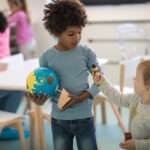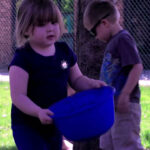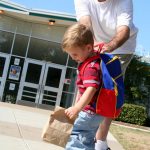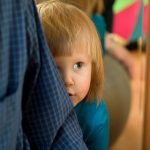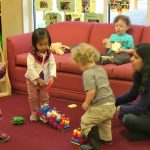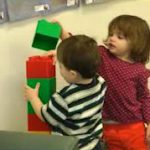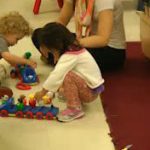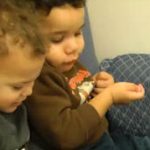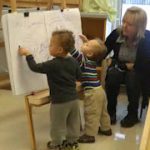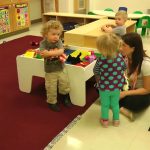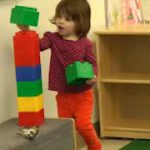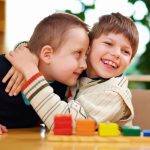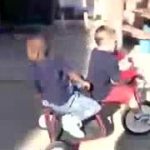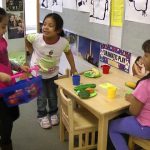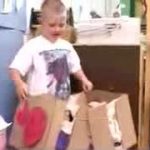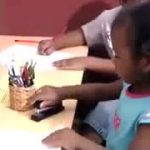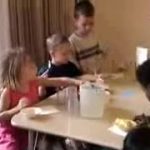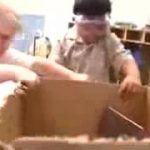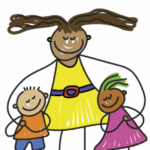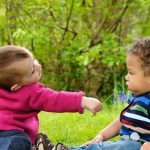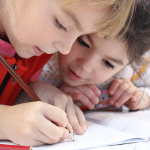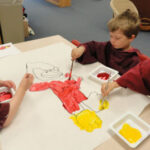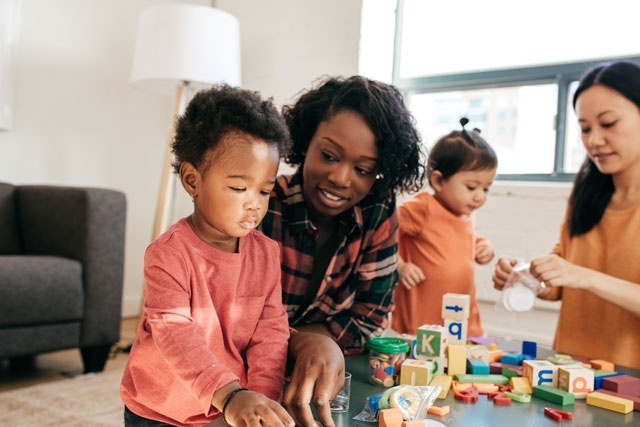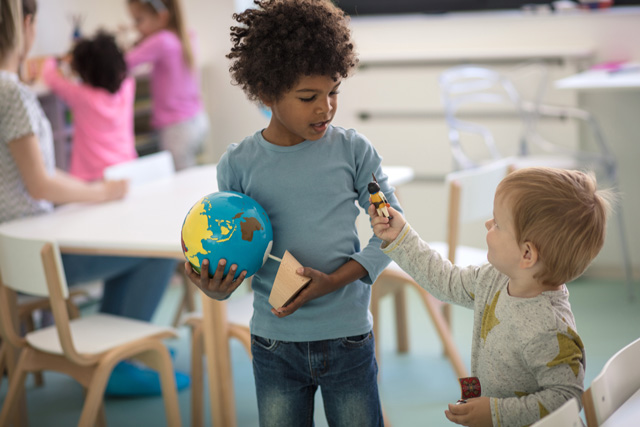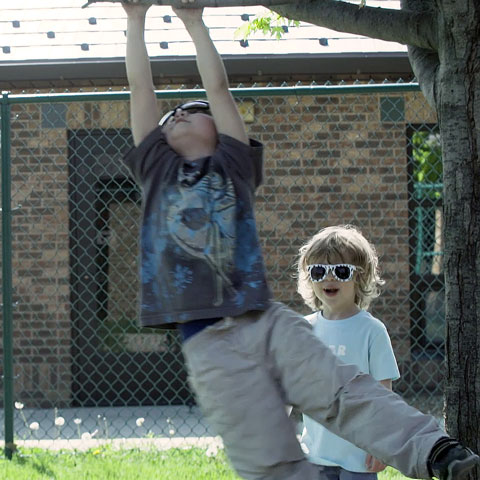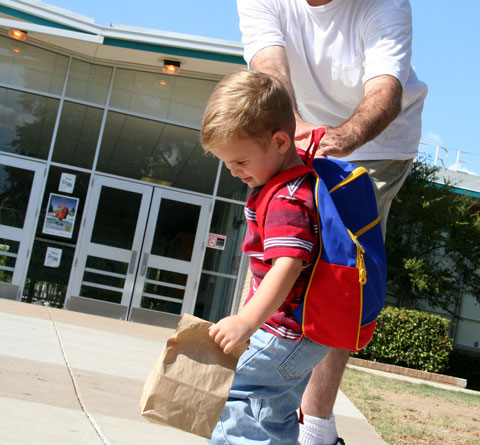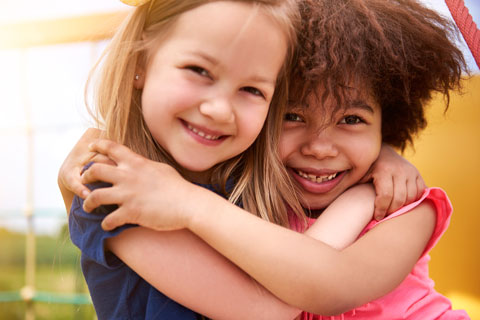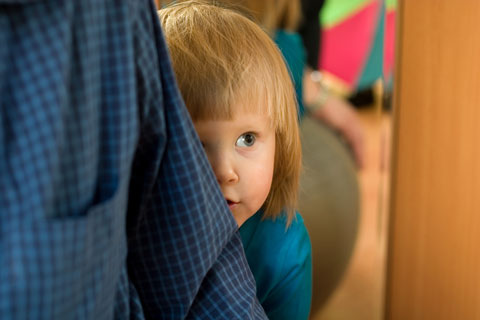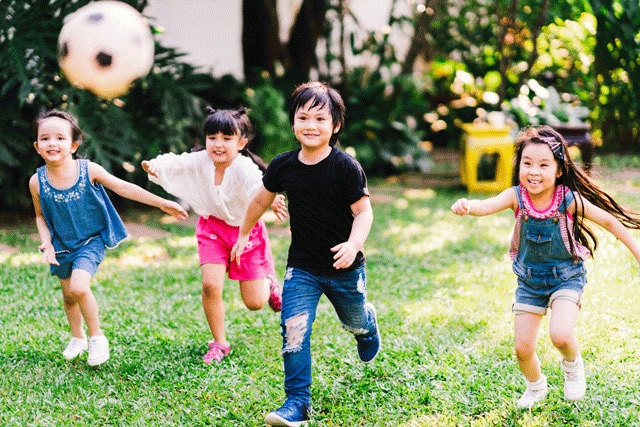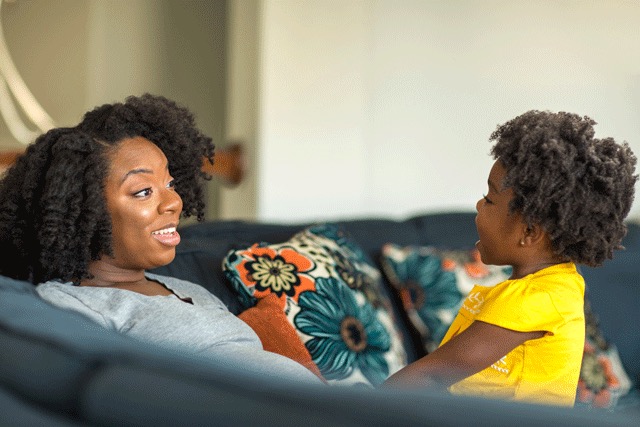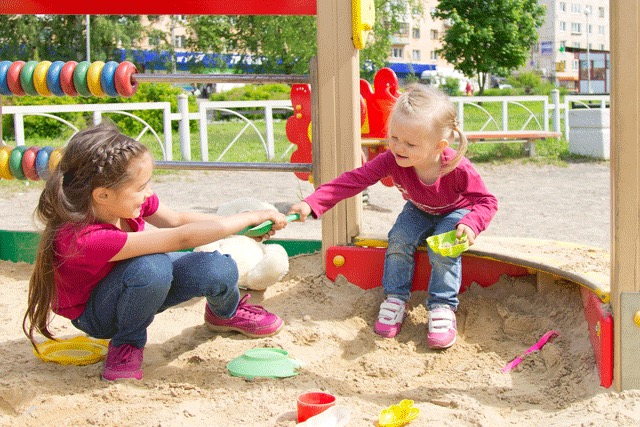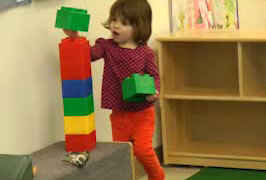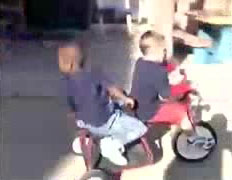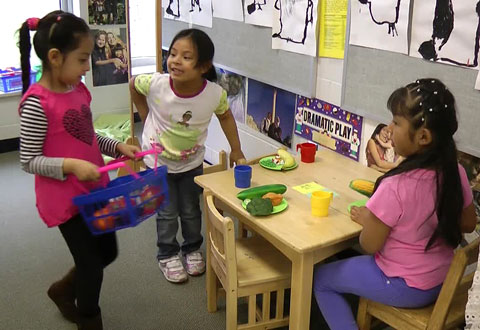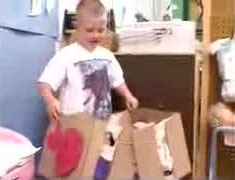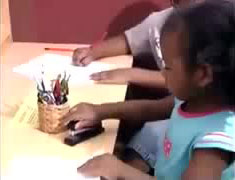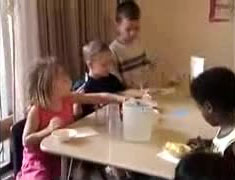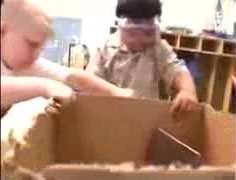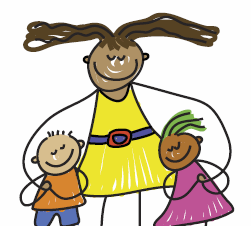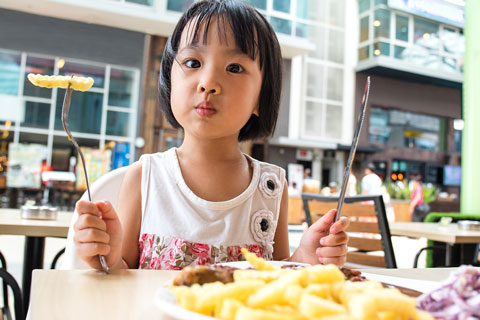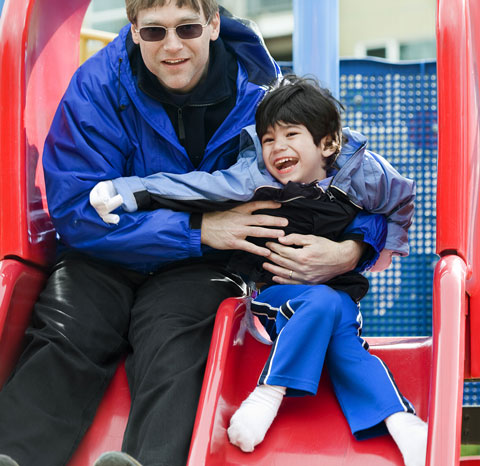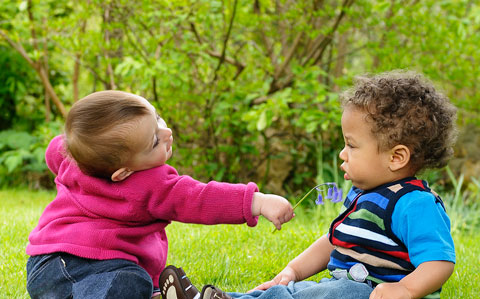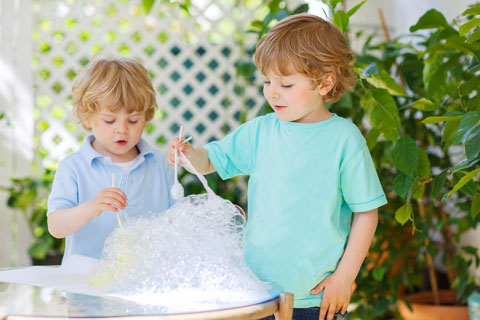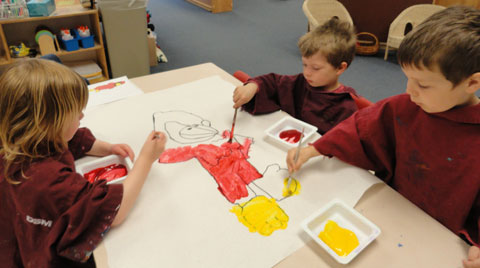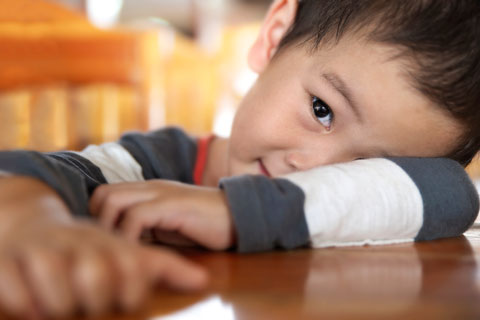Keyword: Peer Relationships
-
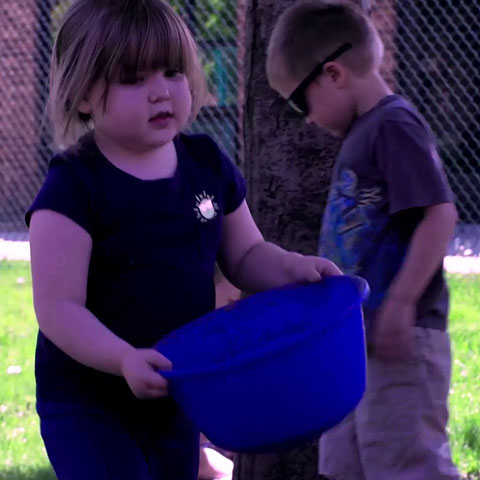
The Blue Bowl
In this video, we see a large blue mixing bowl spark children’s interest and lead to this type of complex play. The children work together in a group to reach a common goal of making “soup” in a bowl. They explore the outdoors and find several materials to put in the blue bowl for their…
-
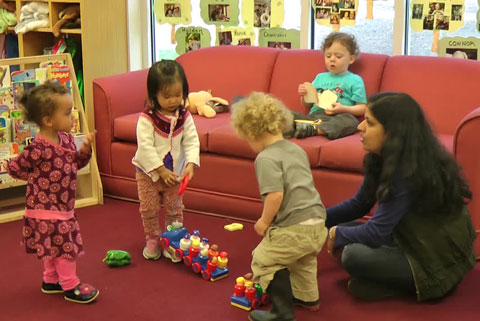
Two Trains
Sadie (26 months) pulls two trains across the carpet and sits down on the teacher’s lap. Sadie and the teacher are talking about the two trains while Daniel watches. Daniel reaches down to take the handle of one of the trains, to which Sadie objects. The teacher then asks Sadie to give one of her…
-

A Tower Together
The teachers provided balance in both supporting Anna and allowing her space to work through situations independently. She followed Anna’s reactions and did not intervene too early.
-
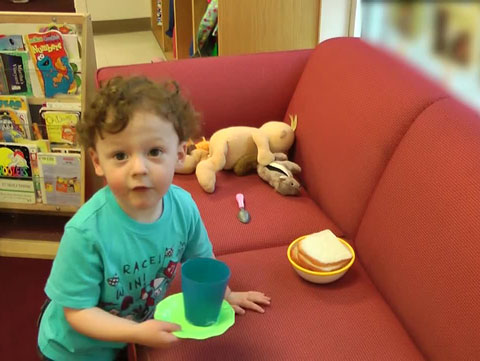
Tea Party
Through a progression of short clips taken over a span of 30 minutes, this video focuses on Hudson (at 30 months, the oldest in the class) gathering items, stuffed animals, and dolls; arranging them on a couch; and (briefly) enjoying his tea party with his stuffed animals.
-

The Duck
This clip demonstrates a young toddler’s ability to connect a picture on a toy with a word and a sign she had been taught.
-
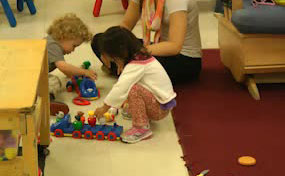
Filling the Trains
This video takes place in a toddler room of a university laboratory child care and preschool. Daniel (25 months) and Sadie (26 months) are playing with trains and putting people back into their trains. The teacher is nearby talking with them, narrates their activities, and helps Sadie to see that she needs to put the…
-
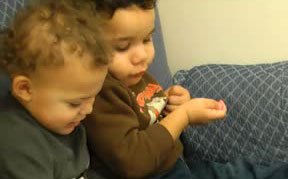
Down There
The video takes place in a toddler room of a university laboratory child care and preschool. Max (19 months) and Levi (27 months) are in the glider chair looking at a nursery rhyme book together. They are engaged in the books for a short while and then begin to rock the chair together. The nearby…
-
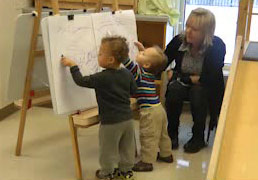
Blue or Purple
This is a nice example of the caregiver reading the cues of the child and assisting them through an interaction that had the potential for conflict.
-
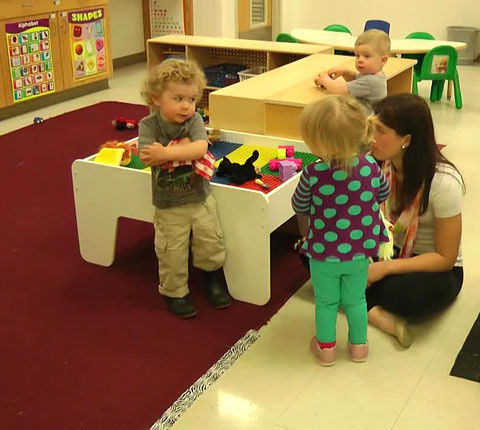
All Done
This video takes place in a toddler room of a university laboratory child care and preschool. Daniel (25 months) and Mia (23 months) are standing at the Lego table. A teacher is helping Mia ask Daniel to share the blanket he is using when he is done. The teacher provides her with words to use,…
-

Learning to Get Along with Friends
As children grow into their preschool years, they often want to play with a friend, whether through a play date at home or with a friend at child care/preschool.
-

Encouraging Child-to-Child Conversation
Group meetings are good times to encourage children to talk directly to each other about what matters to them.
-
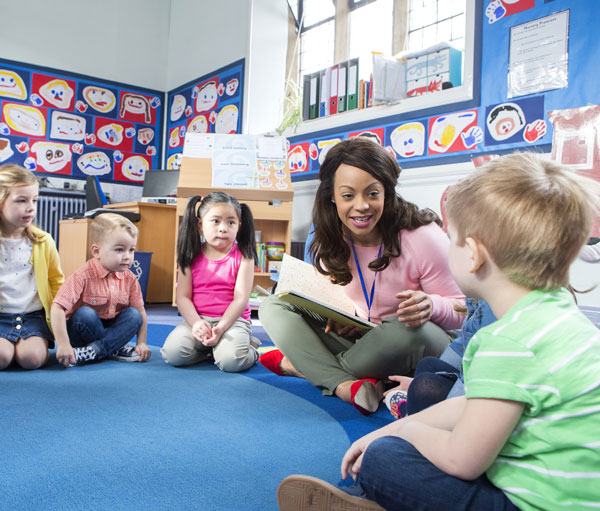
Creating a Sense of Belonging in Preschool
Families and teachers want their children to feel welcome at preschool, to be accepted by their friends, and to feel secure in their daily routines.

